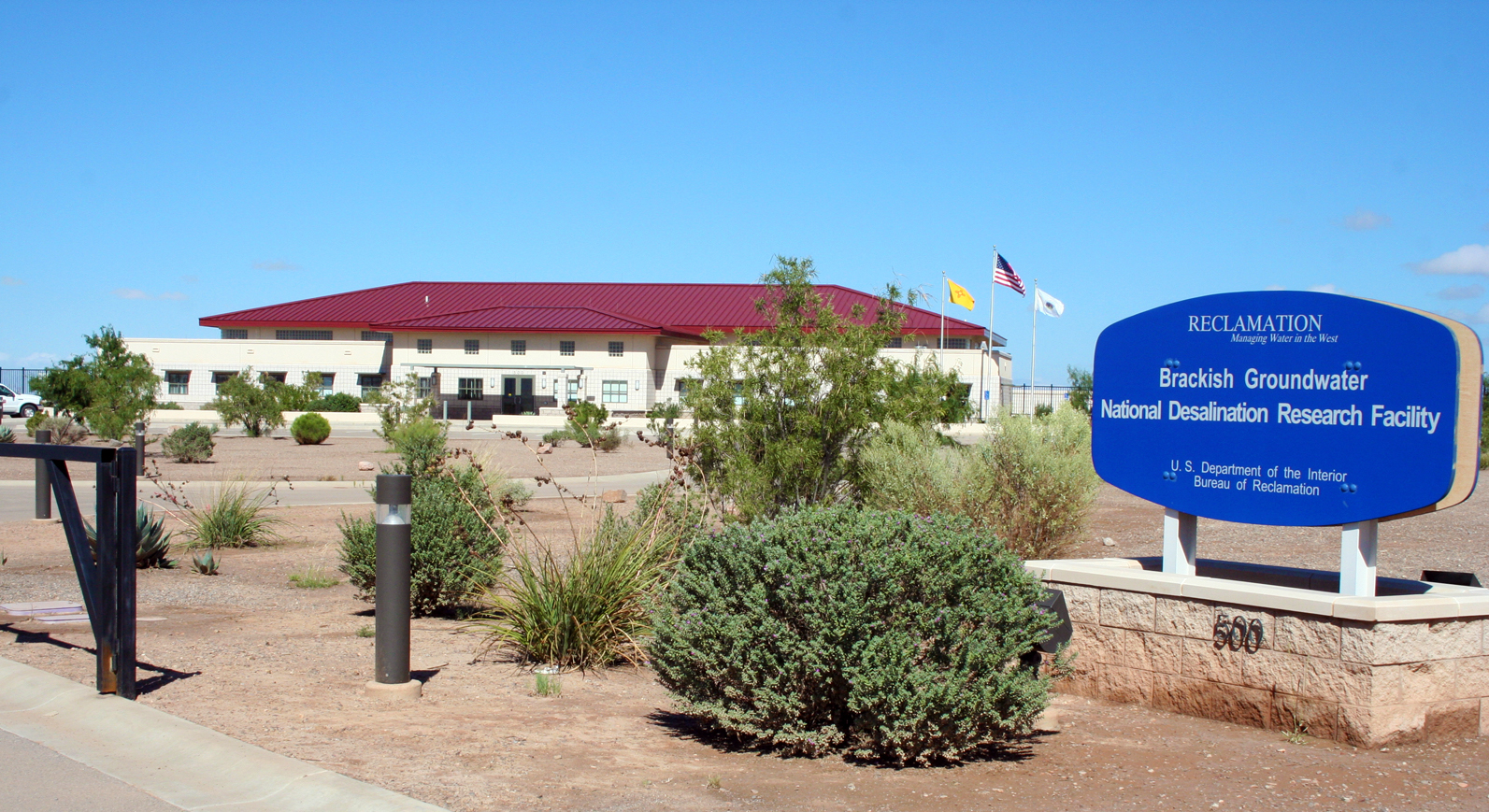NMSU brackish water treatment research could save money, prevent pollution

Standing outside on a hot New Mexico day, you're likely to be unable to escape the sun, and unlikely to find water. Two New Mexico State University researchers are working on a sustainable, cost effective and environmentally friendly method of meeting the most basic of human needs in the Desert Southwest, fresh water, using our most abundant energy resource, the sun.
Their work at the Brackish Groundwater National Desalination Research Facility in Alamogordo, N.M., is exploring which technology - photovoltaic reverse osmosis or photovoltaic electrodialysis - both methods of making brackish water safe for human consumption, is most effective with the specific type of brackish water found in this area, and is the most energy efficient.
The goal of the research is to help solve the water scarcity problem experienced by many in the Desert Southwest, using renewable energy resources, rather than fossil fuels, but the findings of their research could potentially help others in remote parts of the world, too.
Leila Karimi, a chemical engineering Ph.D. candidate working at the Institute for Energy and the Environment, part of NMSU's Department of Chemical Engineering, is focusing on studying the electrodialysis reversal process, while Leili Abkar, a chemical engineering Ph.D. student also working at IEE, is studying reverse osmosis.
"The water emergency situation is certainly alarming," Karimi said. "Almost one-fourth of people around the world are suffering from fresh water scarcity. Desalination can be considered a good solution for this problem, but any desalination process requires huge resources of energy. Conventional desalination technologies rely more on fossil fuels, while the required energy can be provided with renewable energy resources such as solar, wind or geothermal. We are focusing on using solar energy to power electrodialysis and reverse osmosis in off-grid, remote areas that have brackish water resources."
Many people are unaware that the southwestern region of the United States has vast resources of brackish water underground. The water is saline, or salty, which must be converted to fresh water to be consumed by humans, though it is much lower in salinity than seawater. Desalination processes require a large amount of energy; in an area where one of our most abundant natural resources is the sun, harnessing the sun's energy to render brackish water usable makes sense.
The two main groups of desalination technologies are thermal and membrane-based desalination. In thermal desalination, the heat produced by fossil fuels powers the desalination processes, and is the driving force for separating salt from water. In membrane-based separation processes, there are two main types of desalination, pressure-driven or electrically driven. Reverse osmosis is pressure-driven and electrodialysis is electrically driven.
Both processes produce fresh, desalted, drinkable water.
In conventional desalination methods, energy sources come from fossil fuels. Karimi and Abkar are studying the use of renewable energy sources instead, as they don't have the adverse environmental impacts fossil fuels have, such as releasing greenhouse gases like carbon dioxide. And, solar energy is free, once the technology to harvest and store it is in place.
"We have a huge source of solar energy here and high solar insulation," Karimi said. "We can utilize this free energy to power the desalination processes we need."
"In the Middle East, they use thermal desalination technologies because they have abundant resources of fossil fuel and because it is cheap for them," Abkar said. "We're comparing brackish water reverse osmosis with electrodialysis reversal to see which one of them, in this condition, with this salinity that we have here, is more effective."
The two researchers hope to design a better system for remote, rural areas because the final goal is finding a feasible and economical process for remote areas where people are suffering from fresh water shortages, and also don't have access to electricity.
"By finding more feasible desalination processes for different saline water qualities and renewable energy resources, we can provide water for people in remote, off-grid areas at a lower cost and in a sustainable way," Karimi said.
"Many people around the world face water scarcity and fossil fuel is an increasingly very important resource nowadays," Abkar said. "When we are using fossil fuel, we have emissions, and one of the consequences is global warming and climate change."
Photovoltaic power in sundrenched New Mexico could be the solution.
"The desalination group at New Mexico State University would like to be able to provide new water resources for people, especially people suffering from water scarcity," Karimi added. "Water is a basic human right, so it's everyone's right to have access to it."
Karimi and Abkar expect their experimentation at the Brackish Groundwater National Desalination Research Facility to wrap up in October, and plan to publish findings of their research later this academic year.


